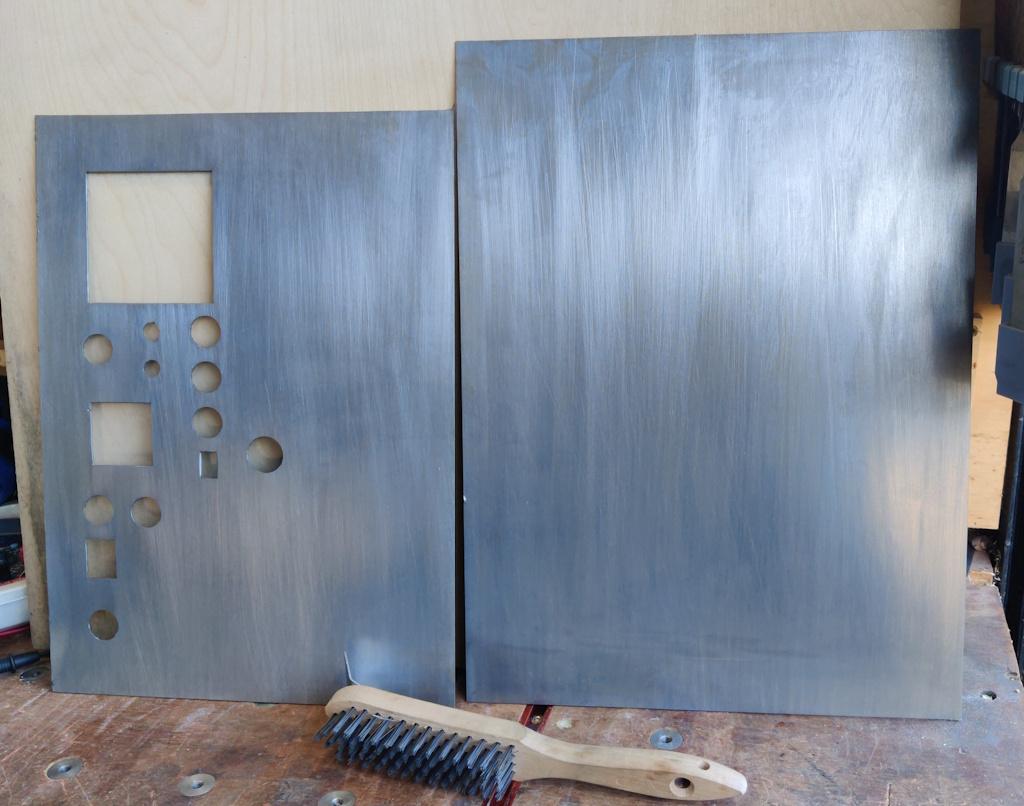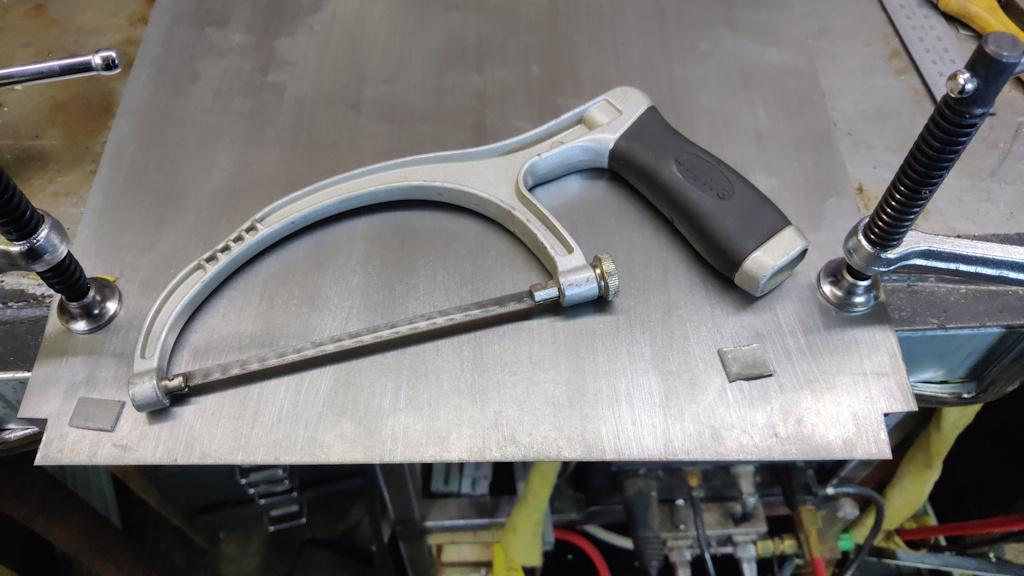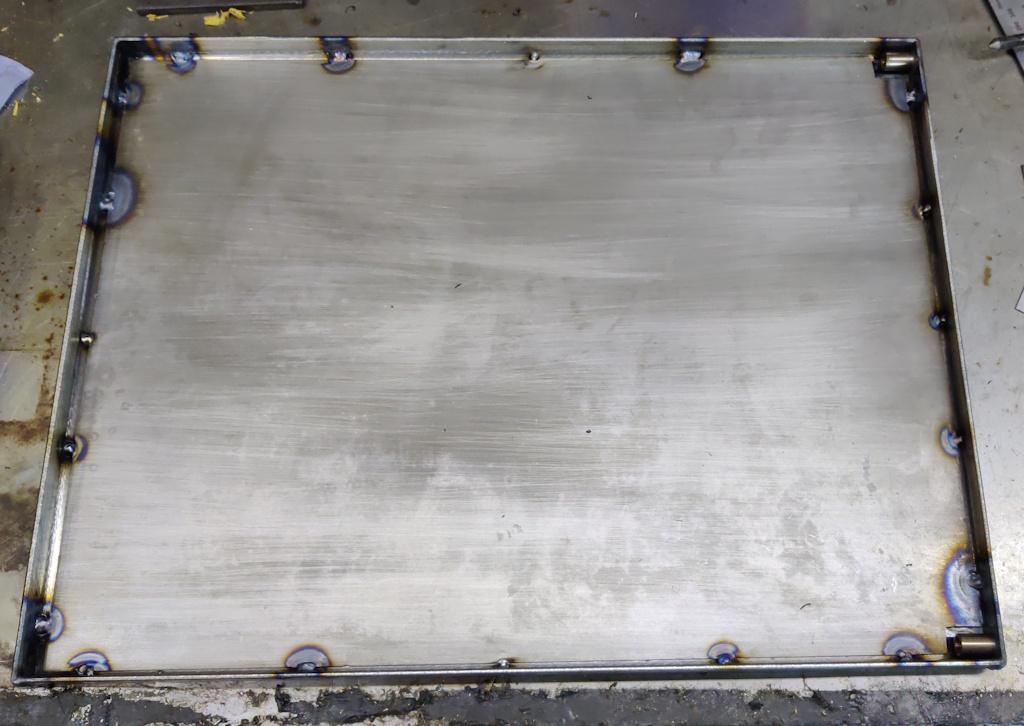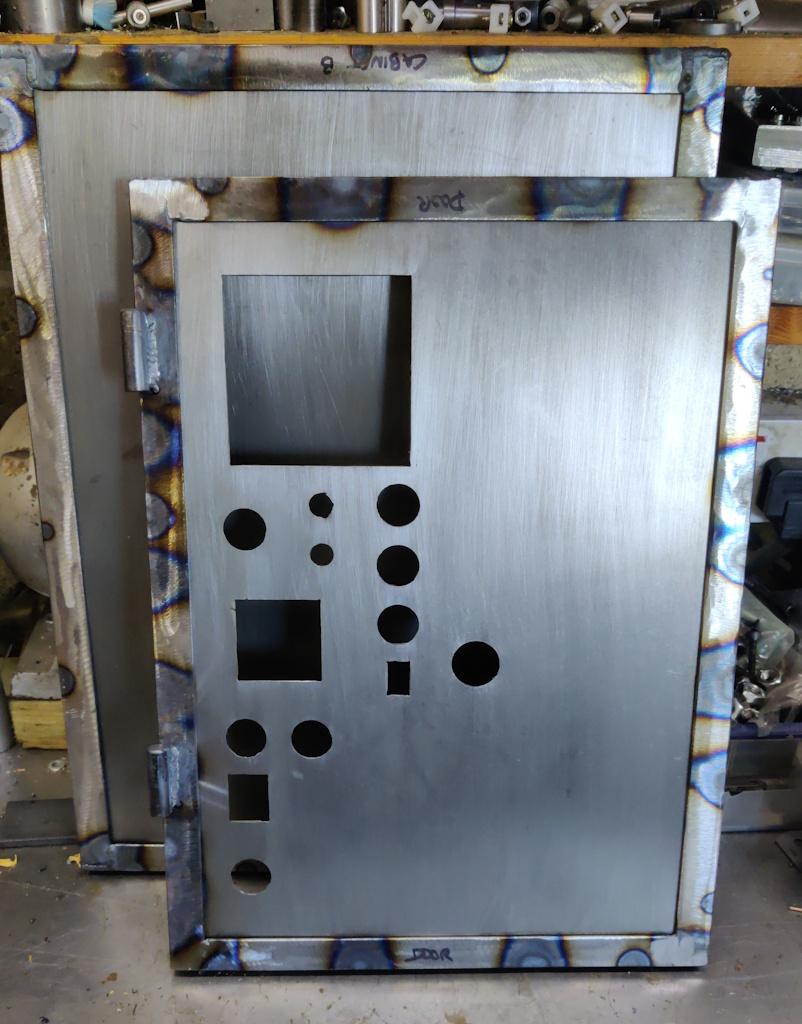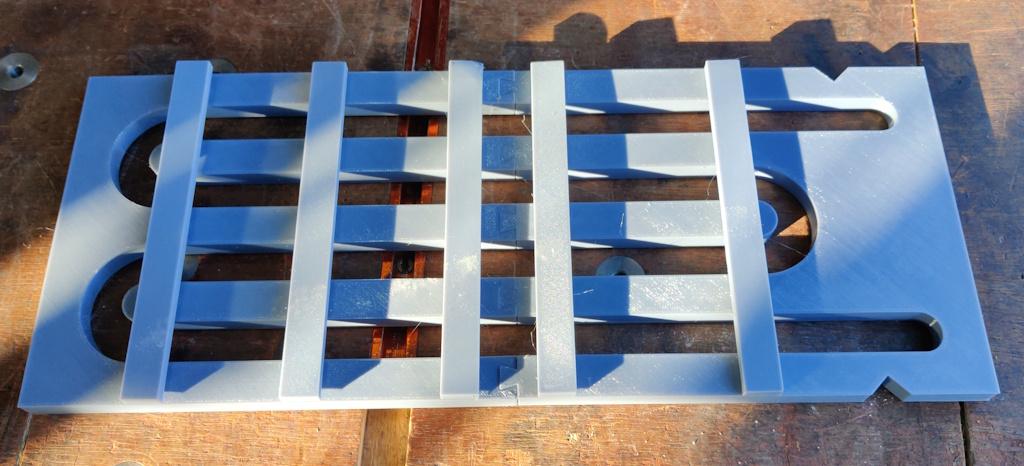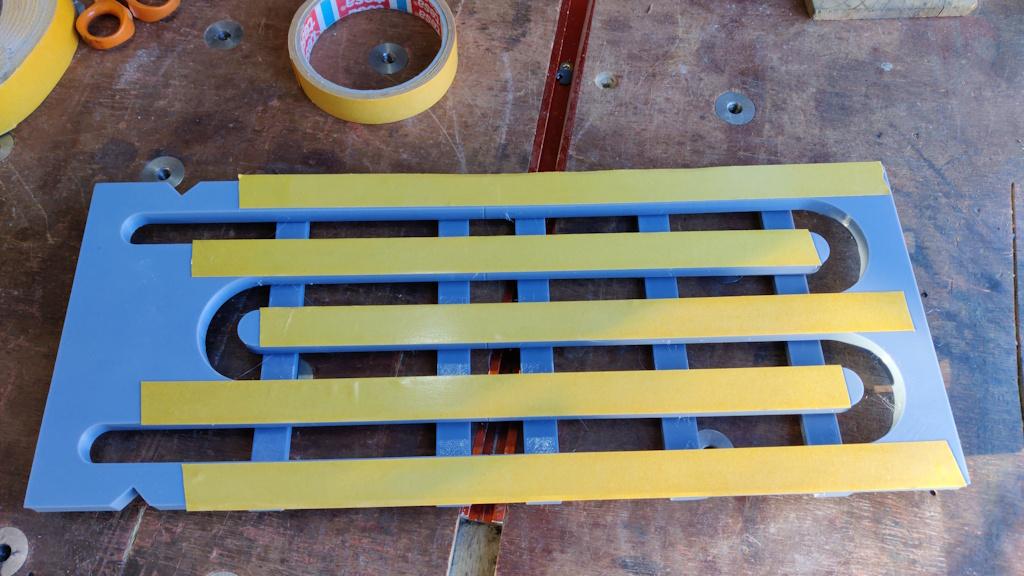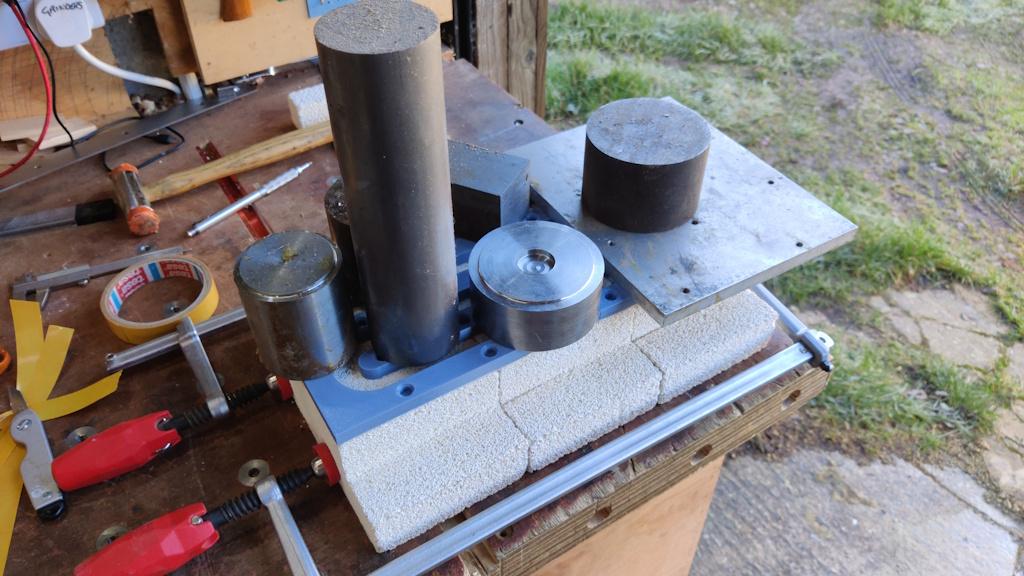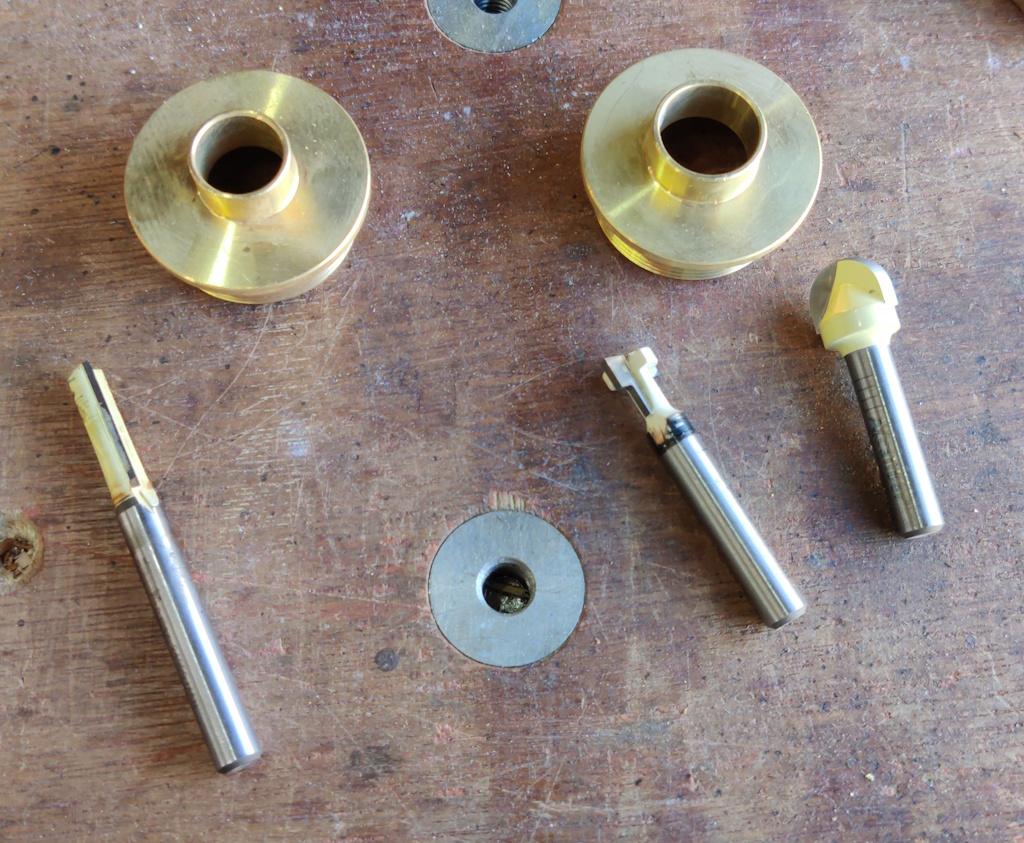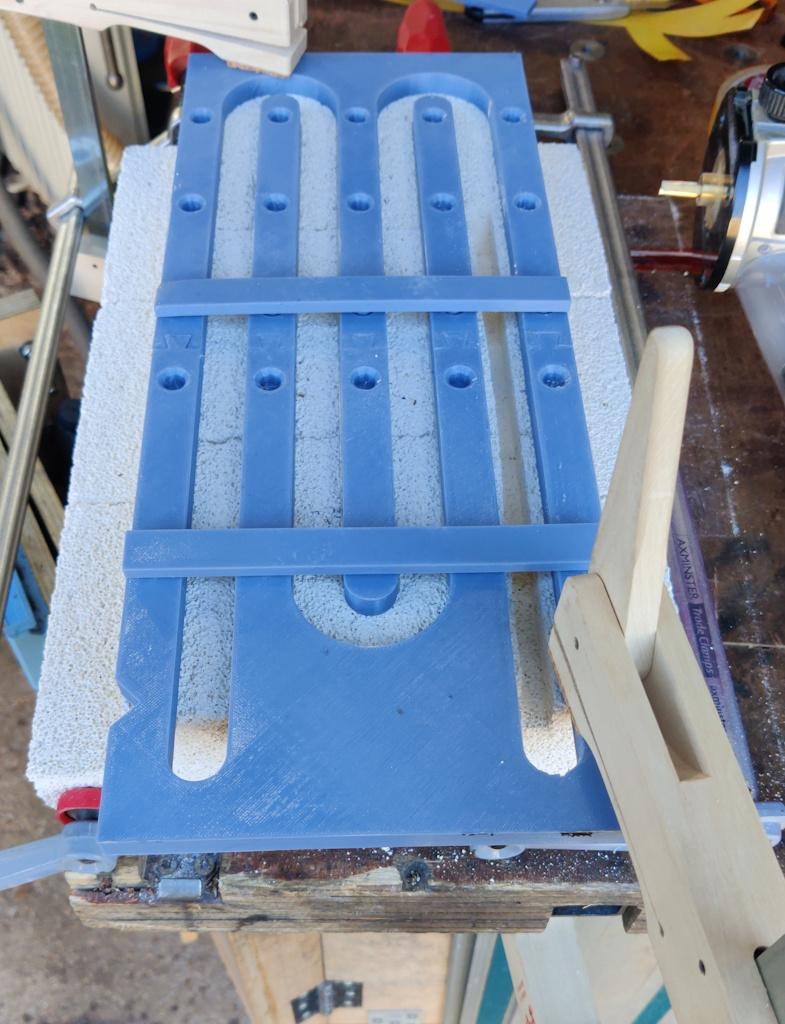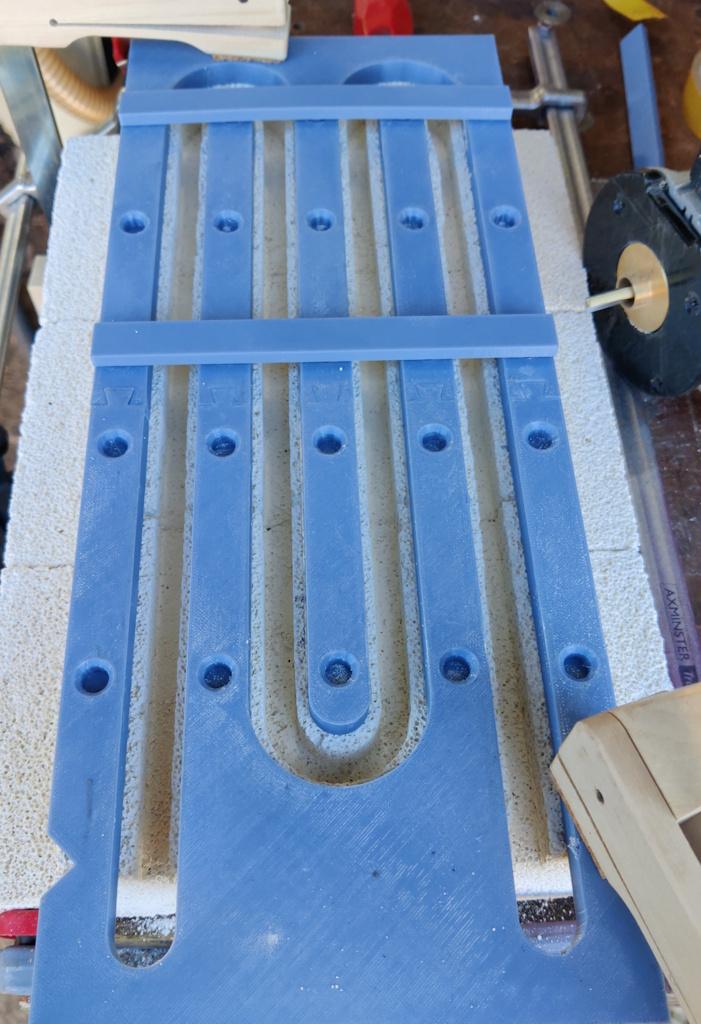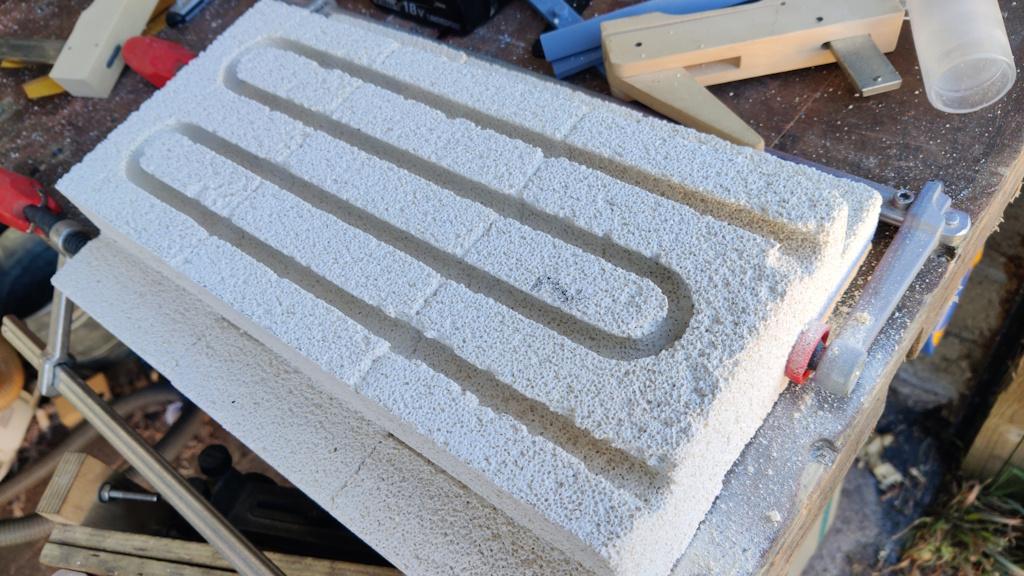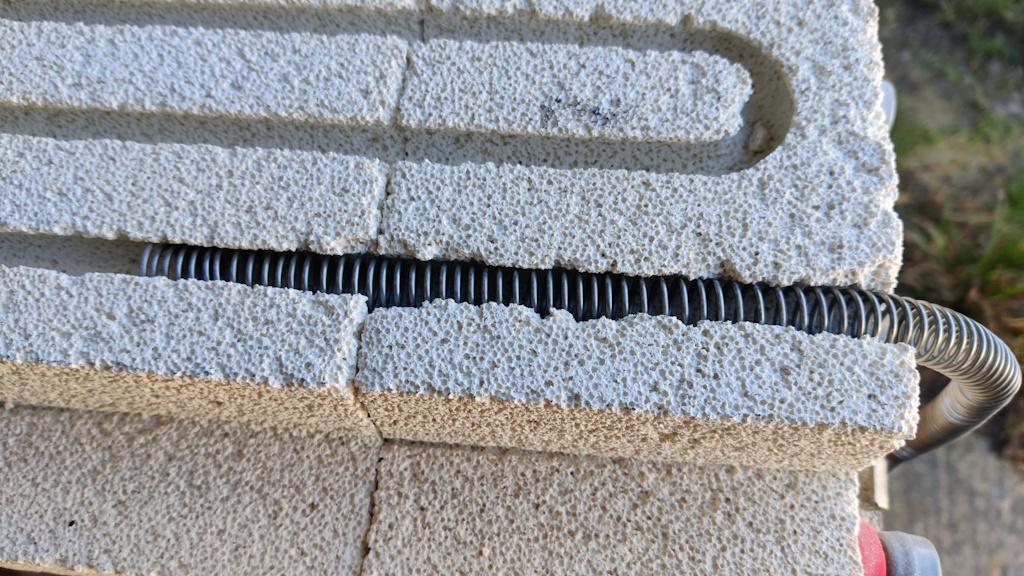Heat Treatment Oven Build Process
Page 15 of 35
Posted 2nd January 2025
On inspecting the steel sheets (in their citric acid bath) this morning, they still looked slightly rusty, but I pulled them out and gave them a quick wipe with a tissue and the rust came off really easily. At this point, you have to work fast as it's astonishing how quickly they'll start to tarnish once they're out of the acid bath.
I wiped them over with some paper towel and then attacked them with a wire brush. I could have oiled them but I knew I was going to weld them almost immediately so I would have had to clean the oil off again very soon. The wire brush was quite a good work-out for the start of the day anyway considering how much the temperature had dropped overnight.
The insert for the back of the control cabinet needed a couple of little cut-outs (because of the weld nuts that I fitted yesterday). I cut out the pockets with a junior hacksaw (as it has finer teeth than my big hacksaw and hence is better for cutting thin sheet). I probably wrecked the blade in the process as it took my an embarrassing amount of time to remember that it was set up (as they usually are) to cut on the push stroke and I've been doing a lot of work with Japanese woodwork pull saws recently! Nevertheless, it did the job quite quickly:
I could then place the sheet into the back panel and do a few tack welds all the way round. I'd been doing quite well at welding yesterday but, while it went fine on these joints, I dipped the tungsten in the weld pool quite a few times today, making me glad I had quite a lot of them ready ground so I could quickly swap them out after each mistake. Anyway, it got done:
As did the door insert, which had a somewhat higher density of tacks along the left-hand edge as that's where all the controls are and hence it'll see a bit more force from push buttons being pressed:
Overnight, I'd 3D-printed a guide (with a 17 mm wide slot) to help with preparing the blocks for the heating element:
The plan with this is to have the heating element captive (by having an undercut slot). I'm not especially confident of how that will work as the fire bricks are incredibly brittle and it wouldn't take much for the retaining lip to break.
To hold the guide in place, I expected (correctly as it turned out) to need to use clamps and such-like. The little cross-pieces you can see fitted to the guide are there to hold the fingers in place while routing grooves in other areas (but they obviously need to be removed when the router is in that area). In a fit of optimism, I decided to try some double-sided tape just on the off-chance it would stick to the fire bricks:
After removing the backing paper, I placed the frame on the bricks and covered it in heavy bits of steel to hold it in place.
Once it had been left for 10 minutes or so, I removed the weights. It took the lightest of touches to remove the guide from the bricks, so the tape didn't work. Not a great surprise, but it was worth a try. These are the router bits and guide bushes I intended to use:
In the end I didn't bother with the little key-hole cutter (which was only intended to be used for a light undercut to deal with the area where the cove (?) bit didn't cut). The 6.35 mm (1/4") straight bit was used with a 14 mm guide bush, which hence allowed it to move 3 mm in the 17 mm wide slot, producing a 9.35 mm wide opening. The cove bit is 12.7 mm (1/2") diameter and is used with a 16 mm guide bush, producing a 13.7 mm opening. In practise of course, none of those dimensions will be anywhere near that precise, but that was the aim. For reference, the element coil is a little over 13 mm diameter.
Routing out the groove was a bit of a plod as I had to keep moving clamps and cross-bars. For the first pass (with the straight cutter), I fitted the vacuum attachment to the little trim router, which worked remarkably well at catching most of the dust produced (I still had the respirator on just in case). This photo shows how it looked part-way through routing the slot...
... and this one shows the straight slot finished:
For the work with the cove bit, I got rid of the vacuum attachment (but kept the respirator on). That was partly because there would be less dust produced in this step, but mostly because I couldn't remove the router from the slot when I was moving the cross-bars around and the vacuum hose would have been a bit unwieldy (with it attached, I couldn't have just left the router sitting in place while moving the bars around as the weight of the vacuum hose would have pulled the cutter straight through the fire brick).
Anyway, it didn't take that long to go all the way around the groove. There were quite a few little breaks, resulting in a rather shabby edge, but it worked better than I thought it would (I didn't have very high hopes for this process!)
I haven't tried feeding the wire all the way round yet (as it still needs stretching out a little more), but I did a quick test fit and it went in relatively easily:
Page 15 of 35
This website is free and ad-free, but costs me money to run. If you'd like to support this site, please consider making a small donation or sending me a message to let me know what you liked or found useful.

 Return to main project page
Return to main project page